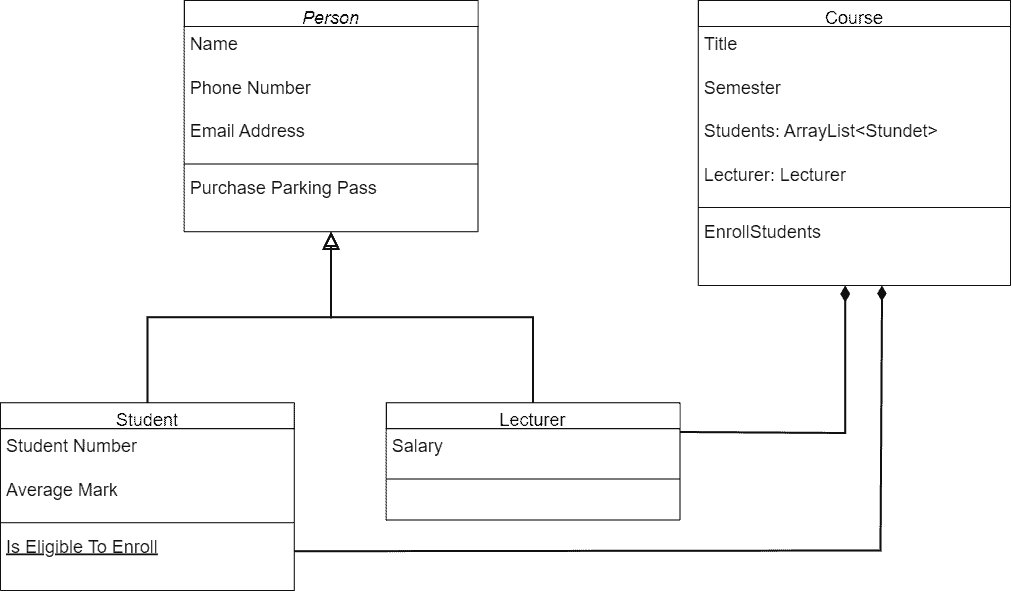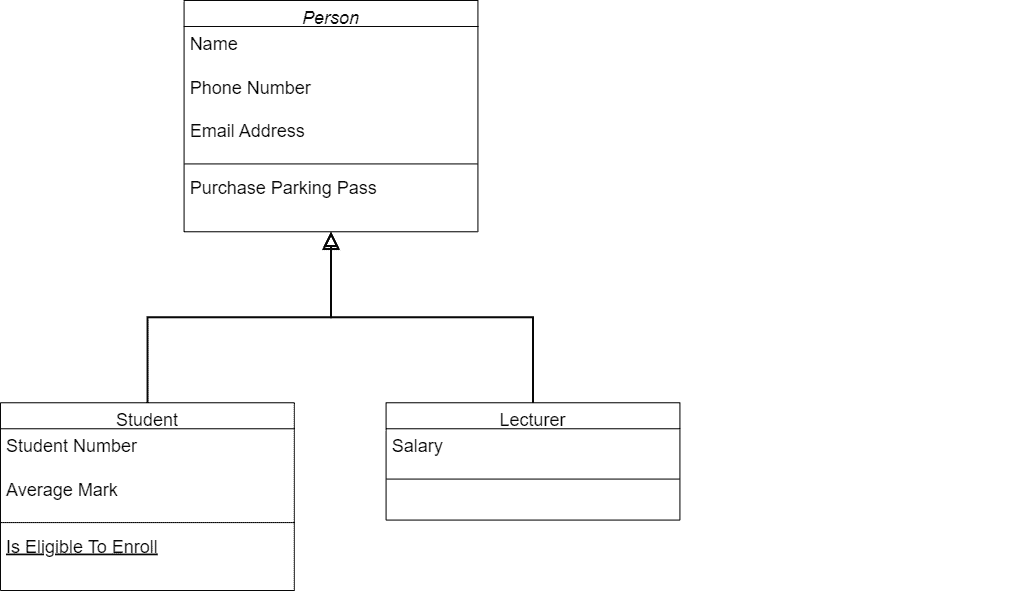1. Overview
Object-Oriented Programming (OOP) is a programming paradigm where objects representing real-world things are the main building blocks. OOP allows objects to have relationships with each other, like inheritance and aggregation.
In this tutorial, we’ll explore the differences between inheritance and aggregation, examine their advantages and disadvantages, and discuss the appropriate use cases for each.
2. OOP and Relationships Between Classes
Object-Oriented Programming is a programming paradigm that aims to facilitate objectively observable reality modeling using a set of simple concepts and relations.
The main building blocks of OOP are objects. Objects represent real-world entities and their properties and behavior.
Another essential component of OOP is the ability to model relationships between objects. Two of the most commonly used relationships are inheritance and aggregation. They are also known as the “is-a” (inheritance) and “has-a” (aggregation) relationships and can be useful for basic modeling.
It’s also relevant to understand that both inheritance and aggregation are not mutually exclusive, and there are cases where we can use them simultaneously in the same project.
As a simplified system modeling example, consider the textual description provided next: “A course consists of a lecturer and students. Student and lecturer are people”.
In the given description, nouns represent the potential classes/objects, while verbs determine the relationship type. In the first sentence, the verb “consist” is a synonym for a “has-a” relation, while in the second sentence, the verb “is” is a typical example of an “is-a” relationship. The UML representation is given in the following figure:

Understanding the differences between heterogeneous relation types in OOP is crucial for designing and developing effective and efficient software.
3. Inheritance
In scenarios where classes have substantial similarities and disparities at the same time, inheritance offers a solution in the context of Object-Oriented Programming.
Let’s consider two classes, C1 and C2, in this scenario. We can isolate the common characteristics of C1 and C2, implementing them in a new separate class called B. As a result, C1 and C2 become smaller and only contain attributes and functions exclusive to each. It is referred to as inheritance, with C1 and C2 inheriting from B.
In the previous example, B works as the base class or superclass, while C1 and C2 are derived classes or subclasses. Superclasses represent a more generalized form, reflecting an upward movement. Subclasses represent a more specific form, signifying a downward movement. So, it forms a hierarchical structure within the class organization.
Formally, inheritance describes the relationship between an ancestor and a descendant, as depicted in UML notation shown next:

In the example, the base class (Person) acts as the ancestor, and the derived classes act as descendants (Student and Lecturer). A separate box is drawn for each class, with an arrow pointing from the derived classes to the base class.
Although several modern programming languages do not allow multiple inheritances, conceptually, it exists from the beginning of the OOP paradigm. Multiple inheritances allow a class to inherit properties and behavior from multiple parent classes. However, it can lead to ambiguity, as two parent classes can have methods with the same name.
Interfaces are a solution to the problem of multiple inheritances to some extent. Interfaces allow the definition of a contract that specifies a set of methods that a class must implement, but without defining how those methods should be implemented.
4. Aggregation
In scenarios where one class uses another class as the data type of its attributes, aggregation (a.k.a composition) as a construct is involved.
Aggregation represents a whole-part relationship between objects in OOP. It is often referred to as a “has-a” relationship, as one object has another object as a part of its state. Unlike inheritance, where objects are related through a parent-child relationship, objects in an aggregation relationship are loosely coupled and have no inherent hierarchical relationship.
So, aggregation allows objects to share information and operations, but they can still be used independently.
Aggregation is a specific type of a broader category of relations known as associations. The simplest and most general kind of relationship is the association, which indicates that the objects of the two classes are related in some non-hierarchical way. An example of aggregation is given below:

5. Differences Between Inheritance and Aggregation
The following table compares aggregation and inheritance in terms of their benefits, costs, and consequences:
Aggregation
Inheritance
Benefits
Looser coupling between classes, allows for more flexible changes.
Improved code reuse.
Better representation of real world relationships between objects.
Avoids the drawbacks of inheritance, such as tight coupling and inflexibility.
Improved code reuse and encapsulation.
Easier maintenance of code.
Clear representation of class hierarchies.
Eases the implementation of polymorphism.
Costs
This can result in complex object structures.
Issues with duplicated data in different objects.
Difficult to identify and maintain relationships between objects.
The composition relationship is not as easily recognizable as an inheritance.
Tight coupling between superclass and subclasses.
Inflexibility to change the superclass without affecting the subclasses.
Potential for unintended consequences of subclass behavior.
Subclasses may have to implement methods they do not need.
Consequences
Changes to one object do not affect other objects in the aggregate.
Easy to add or remove objects from the aggregate.
The relationship between objects is clear and well-defined.
Improved organization of code.
Changes to the superclass can have far-reaching effects on the subclasses.
Subclasses inherit attributes and methods they may not need.
This can lead to a complex class hierarchy.
Inheritance can lead to unexpected behavior if not used carefully.
5.1. Favor Object Composition Over Class Inheritance
“Favor object composition over class inheritance” is a practical OOP principle based on the following arguments:
- The composition provides greater flexibility and maintainability compared to inheritance. Combining objects can easily create new ones with the desired functionality. Thus, we can modify the data and operations of objects by changing their composition rather than changing the underlying class structure
- Inheritance can lead to tightly coupled code, where changes in the parent class can have unintended consequences for its descendants. It also makes it more difficult to reuse code, as the relationship between classes can be complex and difficult to understand
6. Conclusion
In this tutorial, we revisited object-oriented programming and studied two important relation types of this paradigm: inheritance and aggregation.
Inheritance and aggregation are crucial concepts in OOP. Understanding their differences and when to use each one is essential for effective software design. Both inheritance and aggregation can lead to code reusability. But, it’s also relevant to understand that inheritance and aggregation are not mutually exclusive, and there are cases where both can be used in the same project.